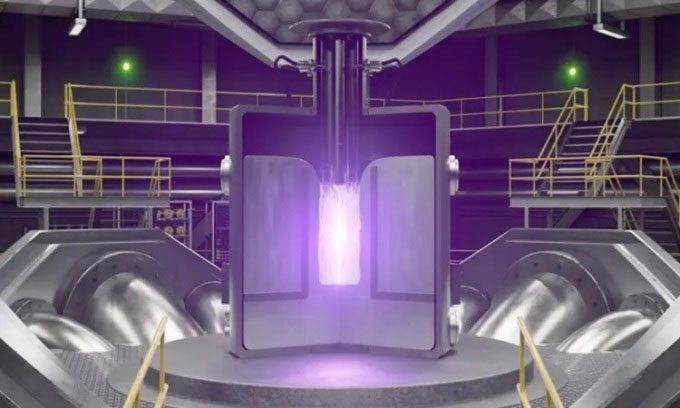Zap Energy, a startup based in Everett, Washington, is developing Z-pinch devices to generate electricity through fusion reactions for the power grid.
According to Ben Levitt, the Vice President of Zap Energy, their Z-pinch device is called FuZE (Z-pinch Fusion Experiment). This is a long tube designed to be simpler than some competitors’ devices, such as Helion’s twisted fusion technology, as reported by Business Insider. “Z-pinch is the first design researched to control plasma to achieve fusion conditions. It is also the first configuration studied by any graduate student because it is the simplest form,” Levitt explained.

Simulation of Zap Energy’s Z-pinch device. (Photo: Zap Energy).
To operate the system, gas is pumped into the machine. An electric current transforms the gas into plasma. Then, electrodes create a magnetic force to confine the plasma. Plasma is the state of matter found in stars. For fusion reactions to occur, where atomic nuclei fuse and release enormous energy, the plasma needs to be hot and dense for a sufficient duration. The main challenge lies in the instability of plasma, which can hinder fusion conditions.
To avoid this issue, researchers moved away from Z-pinch devices in the 20th century and turned to other types of reactors like tokamaks. However, in the 1990s, Uri Shumlak, the Chief Scientist and founder of Zap Energy, began to reconsider Z-pinch devices. He believed that controlling plasma flowing in layers at different speeds could eliminate instability, allowing plasma to be maintained in conditions suitable for fusion to occur and generating net energy (energy produced from the reaction exceeding the energy consumed).
According to Levitt, Zap Energy can currently operate the machine approximately 100 times a day, enabling researchers to test different configurations of the Z-pinch device. Next to the Z-pinch machine in the company’s warehouse is a large array of wiring surrounded by a chain-link fence. These provide the power needed to generate plasma. A single pulse can produce plasma lasting about 100 microseconds.
To generate electricity, Zap Energy plans to use tritium, which cost around $30,000 per gram in 2022. While tritium costs cannot be controlled, Zap Energy aims to save on other fronts. For instance, their method confines and controls plasma using custom magnetic fields. This means the device does not rely on expensive superconducting magnets like the new reactor in Japan, which has construction costs reaching up to $600 million.
Currently, Zap Energy is developing its own power system to charge, store, and supply the necessary energy. These systems could be placed around the Z-pinch device in 6 to 8 large shipping container-sized units. The company’s first milestone is to achieve energy breakeven, followed by producing 10 to 20 times more energy from the fusion reaction than the energy consumed.


















































